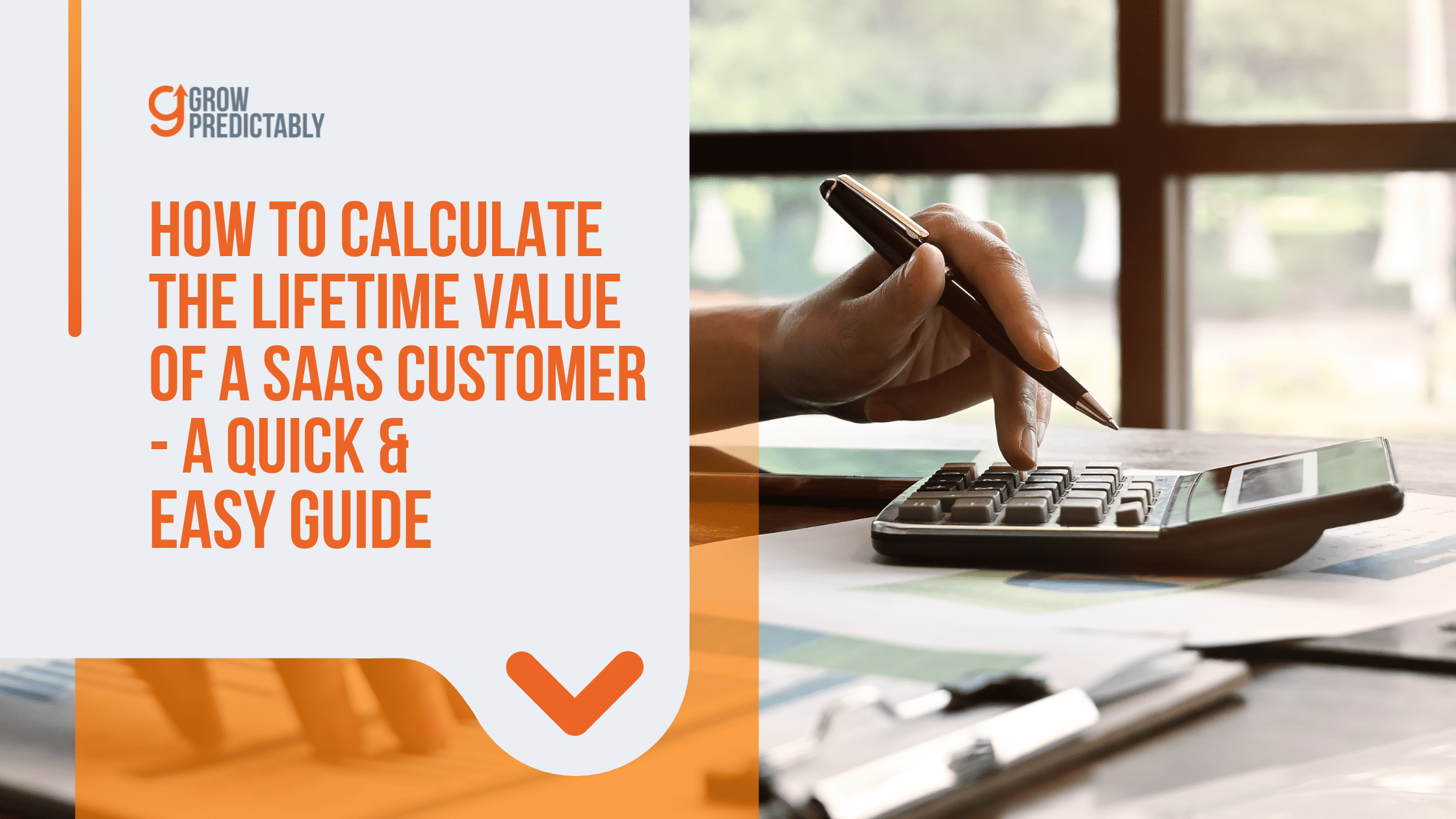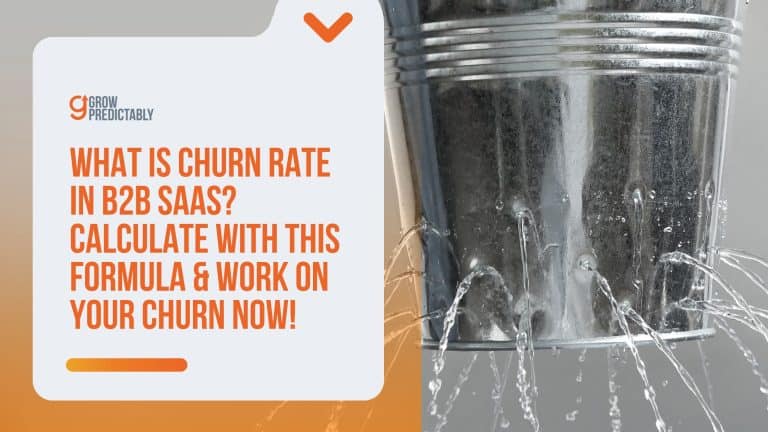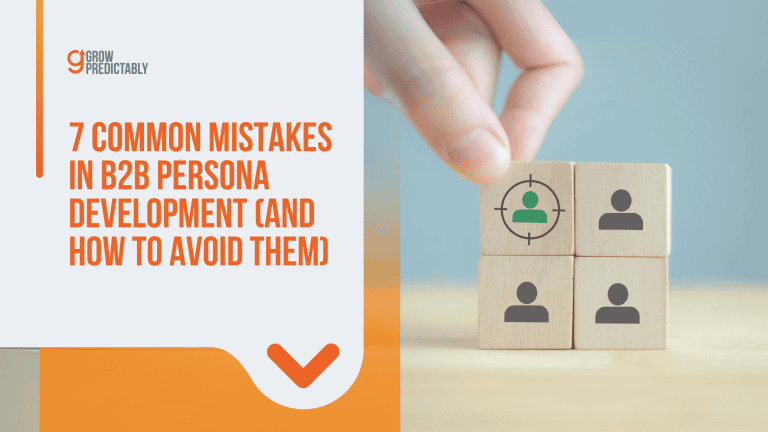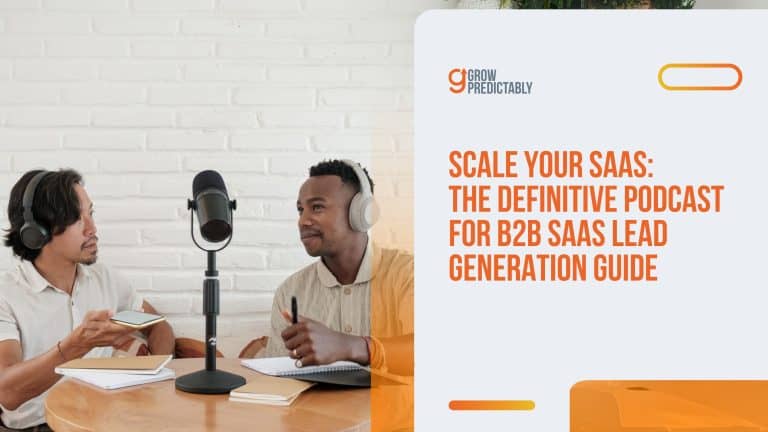How to Calculate Lifetime Value of a SaaS Customer – A Quick & Easy Guide
Do you find addressing customer retention a bit tough in your SaaS business?
Do you want to find the answers in the numbers?
If you want more people to use your SaaS product, you have to understand and interpret customer value better.
But how?
You need to learn how to calculate lifetime value of a customer, SaaS marketer!
Did you know that increasing customer retention rates by just 5% can increase profits by 25% to 95%? That’s according to Zippia.
That’s why today, we’ll find out why the crucial metric of customer lifetime value (CLTV) lies at the heart of retention.
This metric can guide you to make data-driven decisions regarding product development, pricing, and increasing customer retention.
Ready to start calculating?
This is your no-frills guide on how to calculate the lifetime value of a customer in SaaS.
First, let’s define the concept.
- Understanding customer lifetime value (CLTV) is crucial for customer retention and profitability in SaaS businesses.
- CLTV helps in making informed decisions regarding product development, pricing, and customer retention strategies.
- There are multiple formulas to calculate CLTV, each providing insights into the financial health and potential growth of a SaaS business.
- Improving CLTV involves identifying high-value customers, reducing churn, and increasing average revenue per customer.
What is Customer Lifetime Value (CLTV) in SaaS?
Customer Lifetime Value or Lifetime Value is how much money a customer will bring to a business over the time they’re a customer.
It’s like knowing how much your lemonade stand customers will spend on lemonade over the summer.
For example, if a customer buys $5 worth of lemonade every week for 10 weeks, that’s $50 in total.
Now, from the SaaS business point of view, Customer Lifetime Value helps SaaS businesses understand how much revenue they can expect from each customer who uses their software.
This helps them decide how much to spend on things like advertising and customer support.
It also helps SaaS businesses focus on keeping their customers happy so they will keep using the software for a long time.
Basically, it’s a way for SaaS businesses to plan for the future and make sure they’re taking good care of their customers.
Now, what do you need to worry about when solving the CLTV or LTV in your business?
3 Key Metrics Critical to Calculating Customer Lifetime Value
If you’re figuring out how much a customer is worth over time, you gotta pay attention to some key numbers.
Get a handle on these metrics to nail down that CLTV calculation.
This will help you gain better insights as to what your customer data is telling you.
1. Purchase Value
This is the average amount a customer spends in one go.
It helps predict revenue and understand how customers spend so you can better meet their needs.
Use it to understand customer spending habits in your SaaS business and fine-tune your engagement strategies.

2. Purchase Frequency Rate
This shows how often a customer buys from your business or brand at a certain time, like a year.
It’s great for shaping your marketing plan based on how often customers make purchases.

3. Customer Value
This tells you how long, on average, a customer sticks with your business and your products.
The longer they stay, the more valuable they are to your SaaS business.
This also means that they’re finding value in your products enough to stop looking for other solutions elsewhere.

Use this to plan for long-term growth and build lasting relationships with your customers.
To reward my long-standing clients, I double down on showing my appreciation. This includes exclusive offers, personalized services, and early access to updates. This strategy is to deepen loyalty by recognizing and valuing their continued patronage. This targeted approach not only strengthened our relationships but also encouraged word-of-mouth referrals, amplifying my brand’s reputation and reach.
We went over the three important metrics needed when evaluating the CLTV in your SaaS business.
But how do you calculate the Customer Lifetime Value itself?
Let’s check out the different approaches.
How to Calculate Lifetime Value of a Customer SaaS

Finding the Customer Lifetime Value (CLTV) of a customer in your SaaS business can be done in more than one way.
This number not only shows how much cash a customer can bring in overtime but also tells you a lot about how well your business is doing and where it could go.
So, let’s get straight into it.
Here are three formulas to calculate the CLTV in SaaS and which formulas your SaaS business should use.
Formula #1
LTV = Average Revenue Per Customer * Customer Lifetime
Variables:
Average Revenue Per Customer (ARPC) = The amount of purchases that a customer makes in your business on average
Customer Lifetime = The duration in which a customer stays with your business
Example:
If a customer spends $50 each month and sticks with your business for six months, then the LTV is $50 * 6 months = $300.
In this example, your Average Revenue Per Customer is the “$50 each month.” Your Customer Lifetime/Lifespan is six months.
With the given variables, your Customer Lifetime Value or Lifetime Value is $300.
The first formula for CLTV works great for small SaaS businesses that want a straightforward equation. What’s neat about this formula is how simple it is, making it user-friendly even for SaaS businesses that are new and have limited customer data.
Formula #2
LTV = Average Revenue Per Customer / Churn Rate
Variables:
Average Revenue Per Customer (ARPC) = The amount of purchases that a customer makes in your business on average
Churn Rate = The annual percentage rate at which customers stop subscribing to a service
Example:
If your average customer revenue is $50, and the churn rate is 5%, then the LTV is $50 / 0.05 = $1,000.
In this example, your Average Revenue Per Customer is $50, and the churn rate is at 5%.
By dividing $50 by 5%, you get a Customer Lifetime Value of $1,000.
Formula #2 is better suited for SaaS businesses with substantial customer data–especially regarding churn. This formula uses more detailed analytics to better understand how well customers stick around and how it affects cash flow. If a business is good at tracking churn rates, this formula can give more precise and helpful CLTV figures.
Formula #3
LTV = (Average Revenue Per Customer * Gross Margin %) / Revenue Churn Rate
Variables:
Average Revenue Per Customer (ARPC) = The amount of purchases that a customer makes in your business on average
Gross Margin = The difference between revenue and cost of goods sold, divided by revenue
Revenue Churn = The percentage of monthly recurring revenue (MRR) your company lost from downgrades
Example:
If the average customer revenue is $50, with a 10% gross margin and a 5% revenue churn rate, then the LTV would be ($50 * 0.10) / 0.05 = $100.
In this example, begin first by multiplying your Average Customer Value, which is $50, to your Gross Margin, which is 10%.
The first equation will then give you 5. Use this “5” and divide it by 5%.
Your Customer Lifetime Value is $100.
Formula #3 is best for big SaaS companies that are more established in collecting customer data and using analytics tools. It looks at how much customers pay over time and how much money the company keeps after paying direct costs. With Formula #3, larger SaaS businesses can dig into their data better to get a leg up in understanding and boosting customer lifetime value.
You have the metrics and the formulas.
But what should be your ‘why’ behind these equations?
Why is Calculating Customer Lifetime Value Crucial for SaaS Businesses?

Customer Lifetime Value shows you the value you get from each customer within a period, right?
You know that already.
But what else is there that makes this metric so important?
Here are five reasons why:
1. Targeted Marketing Campaigns
With CLTV insights, you can focus your marketing efforts on customer segments with the highest long-term value potential.
This means customizing campaigns to attract similar high-value customers and getting the most out of your marketing budget.
2. Product Development Strategies
Knowing CLTV helps you focus on product features that suit high-value customers, making sure your product development matches what they like.
3. Customer Retention Initiatives
When you spot those high CLTV customers, think about hitting them up with some cool retention moves like loyalty programs or personalized support.
Keep those VIP customers happy and hooked for the long haul!
4. Pricing and Subscription Models
CLTV data can help shape pricing strategies, letting you set up different subscription levels or fancy options that hit the spot with high CLTV customers, which ultimately pumps up your earnings.
5. Resource Allocation
Use CLTV to wisely distribute resources – whether it’s for customer support, account management, or sales activities.
Focus on tasks that add the most customer value in the long run.
By harnessing the power of CLTV, you can steer your business in the direction of sustained growth and profitability.
In addition to knowing the metric’s importance and its formulas, there’s more that you can do to better interpret customer value in your SaaS business.
So what is it? There’s three.
Ready to uplevel your customers’ lifetime value?
3 Ways to Improve Your SaaS Customer Lifetime Value

Now, let’s take it a few steps further.
Aside from the formulas that you’ll need to calculate CLTV, there are also tricks that can help you improve your CLTV in the long run.
Here’s what you need to do:
1. Identify high LTV customers through analytics
Using analytics to spot high CLTV customers helps SaaS businesses grasp what makes their best customers tick.
To pull this off, you’ve got to work those data analytics tools to follow customer behavior, engagement stats, and buying trends.
Let’s say you analyze usage data to pinpoint features or product tiers linked to higher CLTV.
By getting the scoop on high CLTV customers’ traits, the business can tweak its marketing and product game to draw in more of these valuable customers.
2. Reduce customer churn
To keep readers around, it’s key to amp up those customer experiences, fix those pain points, and keep that value coming.
Getting ahead with smart customer success moves, personalized onboarding, and listening to what customers have to say can really help spot and tackle churn triggers.
Here’s an example: if a SaaS company checks out what customers are saying and how they’re using the product, they might find a feature that’s bugging users and making them leave.
By fixing this, they can cut churn and amp up that customer lifetime value.
Reduce Churn with the CVJ

To reduce customer churn in your SaaS business, the Customer Value Journey (CVJ) can be a powerful tool.
It’s a tested and proven framework that we love to use to really make sure that our customers are getting the value they want and need in every stage of doing business with us.
If you’re new to the CVJ, download our Customer Value Journey Worksheet now!
Here’s a step-by-step guide on how to make use of the CVJ for this specific goal:
1. Awareness Stage
Use engaging social media campaigns and SEO-optimized blog posts to raise awareness about your SaaS product. Create informative content that addresses common pain points your product solves.
2. Engagement Stage
Foster engagement through interactive content on social media, such as Q&As or live videos. Provide high-quality blog posts and articles that offer valuable insights to keep customers engaged.
3. Subscribe Stage
Encourage subscription by offering a free trial of your SaaS product or exclusive content for subscribers. Provide early access to new features or resources in exchange for email subscriptions.
4. Convert Stage
Offer time-limited deals or discounts to convert subscribers into paying customers. Provide entry-point offers or product bundles to entice subscribers to make their first purchase.
5. Excite Stage
Create a remarkable customer experience with personalized offers, welcome email series, and bonus features to excite customers about your brand.
6. Ascend Stage
Cultivate repeat purchases by upselling or cross-selling additional features or services. Offer loyalty programs or repeat customer discounts to encourage customers to stay and explore more of your product.
7. Advocate Stage
Encourage customers to share positive experiences through online reviews or testimonials. Implement a referral program with incentives for customers who refer others to your SaaS product.
8. Promote Stage
Establish an affiliate program where satisfied customers can actively promote your product in exchange for rewards. Create customer success stories and case studies to showcase the positive impact of your SaaS product.
By implementing these strategies at each stage of the CVJ, you can build stronger relationships with your customers, increase their satisfaction, and ultimately reduce customer churn in your SaaS business.
These suggestions have little to no barriers to entry, making them practical and effective for addressing customer churn.
3. Boost average revenue per customer
Upselling, cross-selling, and tweaking prices can boost each customer’s spending. Imagine adding cool features, pricing based on value, or different subscription levels.
A SaaS company might offer a fancier subscription with extra stuff or top-notch support.
By evaluating how well these ideas work, the company can see if it’s making more money per customer and improving customer value over time.
Focusing on this stuff helps SaaS companies keep customers happy longer, leading to steady growth and more profit.
These three best practices are tested and proven when it comes to improving CLTV.
Actually, in other SaaS business, they leverage these practices and more.
Let’s take a look at one of these business.
Case Study – DirectIQ

DirectIQ, a New York company, hooks you up with detailed email marketing info through its easy-peasy email tool.
You can join for free and kick off your email game without whipping out a credit card.
DirectIQ’s mission is to get more people to use their product, shine bright in a busy market, and set themselves apart from the pack.
Strategy:
- No credit card is required for sign-up.
- A variety of modern email templates to choose from, with the ability to create new templates using a drag-and-drop editor.
- Features like unlimited sends, A/B campaigns, and email automation.
- Premium features include Spam Doctor and Inbox Premium.
Outreach:
- DirectIQ focuses on creating appealing content that gives viewers a personalized experience of how easy it is to use the product.
- They used a hands-on approach from top management, as exemplified by a quote from the CEO on their website.
Results:
- The company used a series of refined and powerful videos as the perfect solution to address the pain points.
- These ‘How-to videos’ were the easiest way to deliver useful information about the product to a wide audience.
- The far-sightedness in using a series of training videos resulted in reducing customer support tickets and increasing user adoption.
This case study shows how DirectIQ used videos to grow smart and cut down on customer support headaches, boosting how much customers stick around.
By sharing helpful stuff and making it easy for newbies, they fixed what bugged customers and stood tall in a fierce market.
FAQs
Key Takeaways
Knowing how to figure out the lifetime value of a customer in SaaS is super important for your business’s growth and profits.
Knowing this metric is super important for keeping customers and growing your business.
By using the right formulas and paying attention to key metrics like purchase value, how often they buy, and overall customer value, you can make smart choices to boost your SaaS business’s profits.
Try out these strategies to boost your customer lifetime value and unleash your business’s full potential.
If you want to keep leveling it up with CLTV, digital marketing, business strategies, and mindset, make sure to check out our other blogs!








